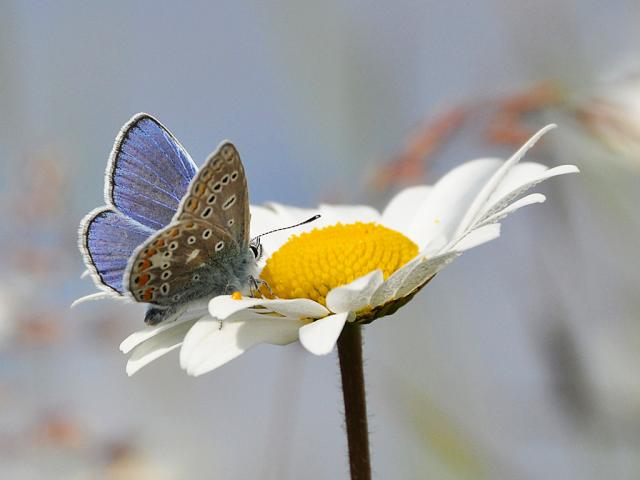
We’re delighted to be able to share Plantlife's guest blog post from our very own Dr Phil Sterling.
Phil used to work as the Ecologist at Dorset County Council and for 4 years he managed the road verge maintenance budget and teams. He showed in practice how the authority could save money through changing to cut-and-collect mowing, and in doing so allow more wildflowers to thrive on the county’s verges. He now works for here at Butterfly Conservation on ‘Building Sites for Butterflies’, a national programme encouraging creation and management of grasslands for wildlife in the built environment.
The programme showcases habitat creation such as achieved along the verges of the Weymouth Relief Road in Dorset, where regular monitoring is demonstrating colonisation by a range of plant species including swathes of orchids, and many species of butterflies and moths. We hope you’ll enjoy reading his insights on road verge management in the current challenging times:
Road verge management and Coronavirus – can we expect changes in these difficult times?
This is a question to which there is no one answer but I thought I would set out my thoughts on what changes if any, we’re likely to see to the management of our road verges during the pandemic. In essence, it is likely to be anything from business-as-usual through to a reduction in the frequency of mowing as staff and resources in local government, in particular, are diverted to more pressing needs to serve the vulnerable in our communities. With any change to the status quo, there will be a public reaction, some urging that we must maintain pride in public places and neat-and-tidy verges are part of that, while others will applaud any reduction in mowing frequency and demand we never return to the regular short back and sides. Indeed, the current pandemic could amplify the divisions.
So, what are the motives to mow verges? Despite the extensiveness in the content of the Highways Act 1980, the principle duty in law is to keep highways in a safe and passable condition to enable people to use them. There is no duty to mow verges to keep them looking tidy. If verges get too long and obscure visibility or vegetation overhangs the road, management happens to keep the highway safe to use. As individuals we also must use the highway in the condition we find it, so the local authority may not be at fault if they fail to mow verges, and the blame when something happens is rarely one way. When times get tough, such as during the recent decade of austerity, or the current pandemic, it is sensible for local authorities to prioritise their spending on what really matters. It might be that verges are cut to maintain safety only, rather than to the frequency we have got used to in urban areas.
Is there any evidence of change already? No, not yet because the mowing season has only just started in April. In Dorset, my former council colleagues say that mowing will continue as normal for the time being but if in-house staff, who mow much of county’s urban verges, are seconded to other duties then mowing frequency may reduce in the summer. Contracts for the rural verge network in Dorset are unlikely to be affected.

The verge cutting programme by Dorset Council staff is different from many other local authorities in the UK, having swapped from cut-only mowers to cut-and-collect machines. In the last few days, I have noticed the A354 main road into Weymouth doesn’t need a cut yet as the sward is barely a few inches tall. These verges have been on a cut-and-collect regime for 3 years. I remember when I took over management of verge mowing in the county in 2014 there was a rush to get the cutters out on their rounds before Easter because the grass was too long and we needed to make the verges look tidy to welcome visitors into the town. That is no longer a requirement as the grass on the verge looks tidy without management. The upside from a wildlife perspective is that there is no need to mow the prolific flowering of celandines, dandelions and daisies that are providing important early nectar sources and look lovely.
It appears that cut-and-collect in Dorset, in a small way, is helping the fight against the virus by allowing Dorset Council staff to undertake other duties to serve their communities! I hope other local authorities can learn from and ape the Dorset model.
Dr Phil Sterling
FCIEEM
Follow Phil on Twitter: @PhilSterling3

